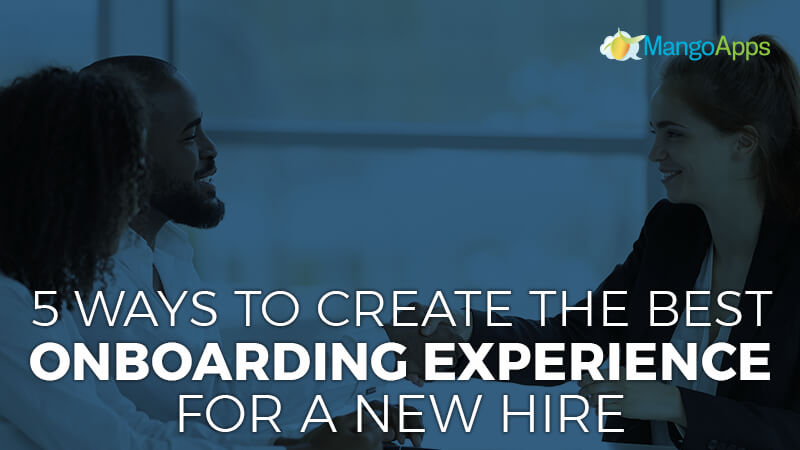How can your organization create the best onboarding experience possible to accommodate for new hires? In order for any business to grow, new employees have to be onboarded. Recent studies have shown that nearly one-third of new hires quit their job within the first 6 months. Retaining long-term and effective employees is essential for every business. But how do you help employees feel welcomed, engaged, and appreciated? It starts with empowering employees from day one. In a survey, 53% of HR professionals reported an increase in positive employee engagement when onboarding activity is improved.
Here are 5 ways to improve your employee’s onboarding experience:
#1: Onboarding Into An Inviting Culture
Starting a new job is always a bit of an intimidating experience. You’re suddenly introduced to a new environment, a new culture, and a new set of guidelines. Establishing a welcoming and accepting culture beforehand will make this transition much smoother. Take a look at your team or work environment and consider what you can do to create a more inviting culture. Team welcome activities with new employees are a great place to start. When a new member joins the team, try organizing an informal gathering where everyone can get to know each other away from the typical work environment. When done correctly, team introduction activities can help establish work culture standards for employees.
#2: Keep An Open Door Policy
A newly onboarded employee has a lot to learn in a relatively short period of time. From incorporating unique business practices to learning product information, retaining all of the information can prove challenging. It’s completely natural for new employees to need reminders and make mistakes as they start out. This transitional period is the perfect opportunity to demonstrate an encouraging and supportive environment. By promoting a judgment-free open door policy, new employees can comfortably ask questions and refresh their knowledge on important information. Such policies should allow employees to confidently grow in their new position by openly seeking guidance and direction. Open door policies can also improve the overall level of transparency within a company. This leads to both new and established employees feeling motivated, trusted, and valued.
#3: Take Advantage Of Technology
Many companies primarily use technology during onboarding as a tool for conducting presentations, but it has so much more to offer! Some of the best organizations successfully supply their workforce with employee-friendly technology. Tools like MangoApps help companies set up social media-inspired intranets to foster learning experiences and nurture collaboration. New hires receive access to interactive communities from day one, making it easy to discover more about their roles and responsibilities, make friends with similar interests, and much more. In some organizations, technology allows the onboarding journey to begin well before the employee enters the office. Companies can use such platforms to introduce new employees to their teams, provide learning materials, and more.
#4: Appreciate Their Investment
When a new customer is acquired, it is natural to assume that he or she will be interested in learning more about your organization. Onboarding a new employee is a similar process. While an employee may not directly invest money into your business as customers do, employees are willing to invest their time, talents, and energy each and every day. It’s only natural to provide employees in turn with transparency in the workforce. Employees should never need to wonder about how their work is contributing to company success. Just like an organization’s customers, employee investment should be appreciated right from the start.
#5: Improve With Honest Feedback
Successfully completed employee onboarding requires employers to evaluate and reflect on the process. Employers need to collect honest feedback as well as consider the onboarding process from their own experience. Continually adapting, assessing, and improving this process is the key to long-lasting employee success. What worked well for employees at one point in time isn’t necessarily the best policy for every onboarding experience. Seek out genuine feedback from new hires and be willing to adapt as needed. Implementing changes based on employee experiences will not only improve future onboarding activities, but also demonstrate receptiveness to employee’s thoughts and ideas.
Onboarding new employees should be a collaborative team experience, not a process for HR to take on alone. Embracing employees to your work environment is a key to achieving long-lasting success.
Contact us to learn more about how MangoApps helps companies improve their overall collaboration, communication, and company success.








